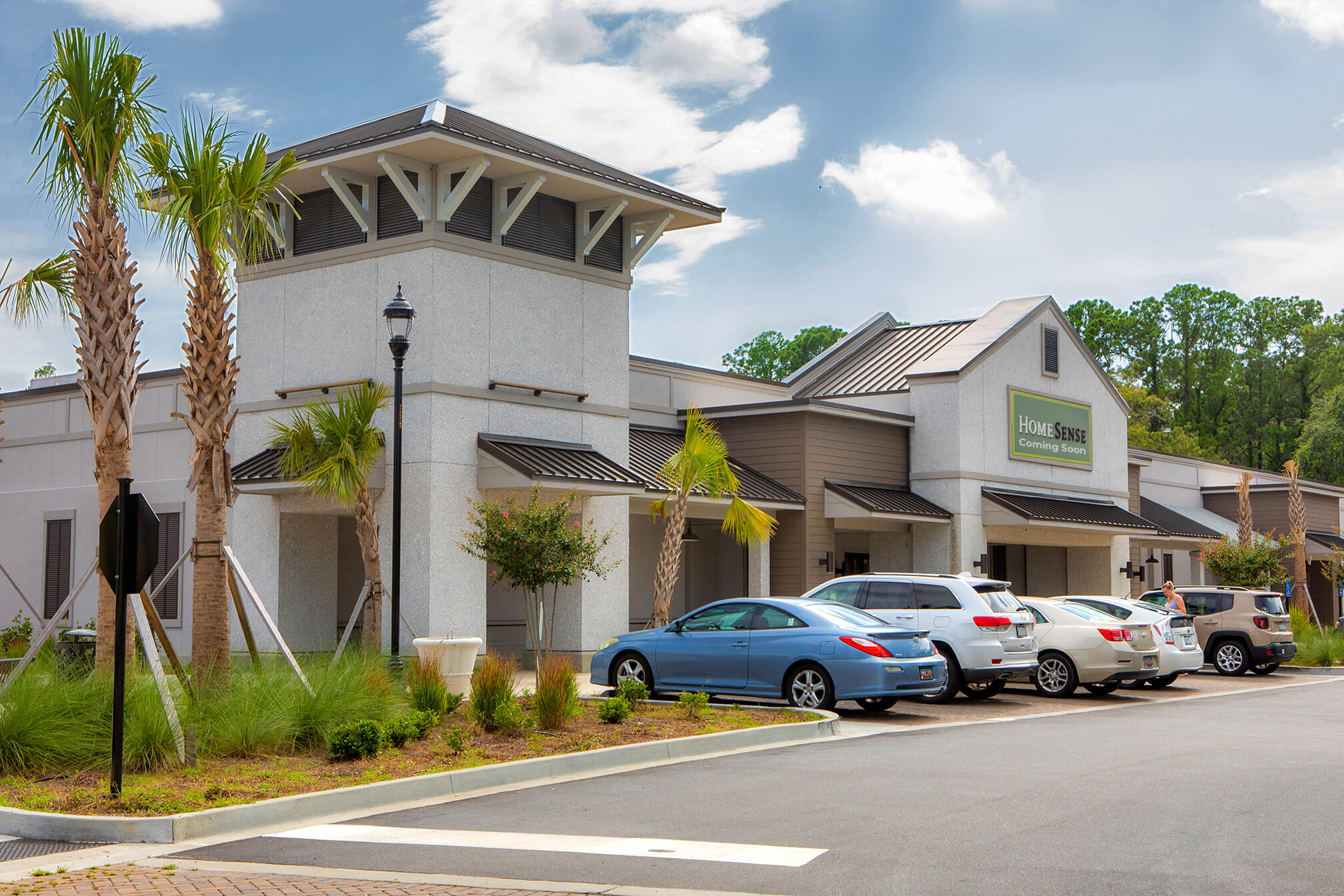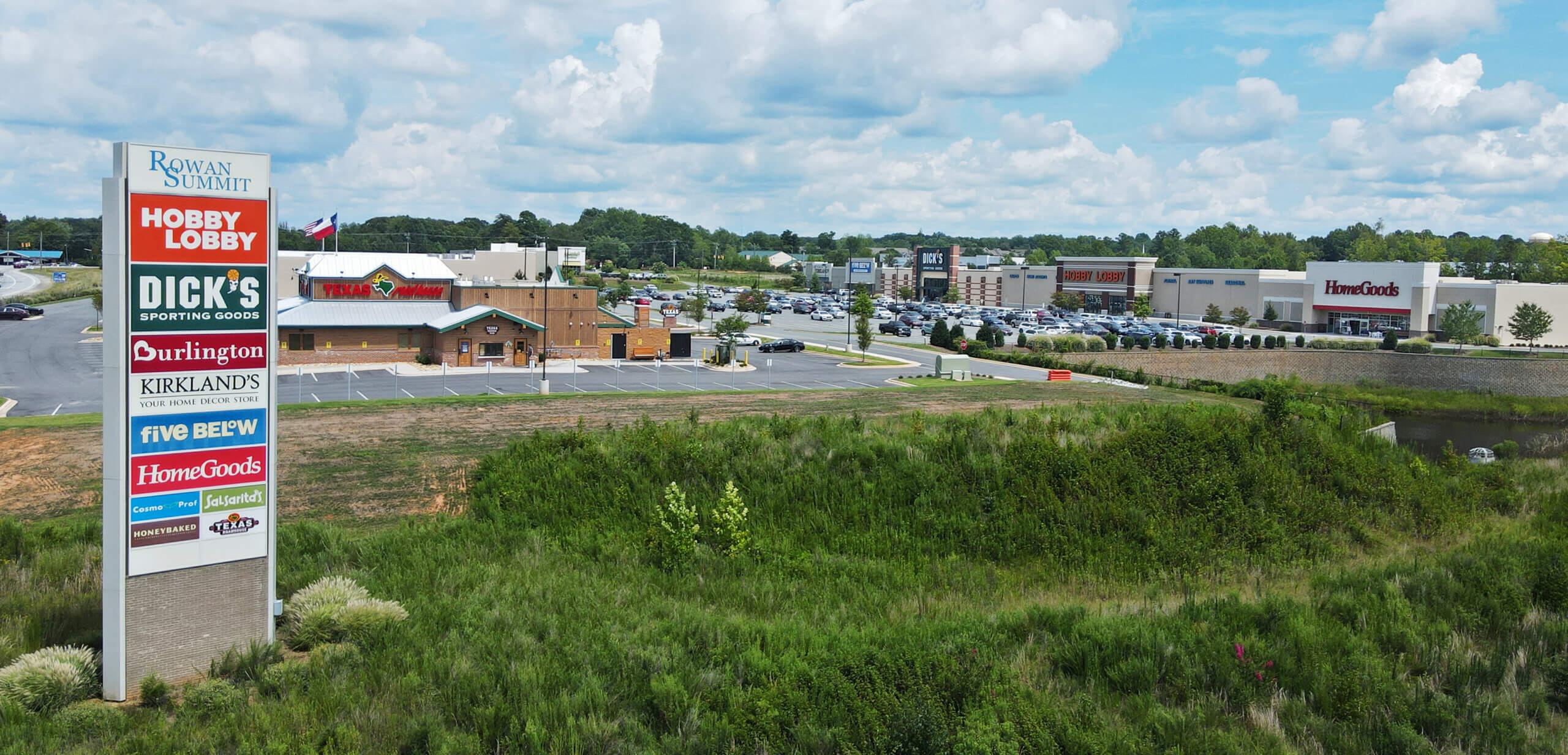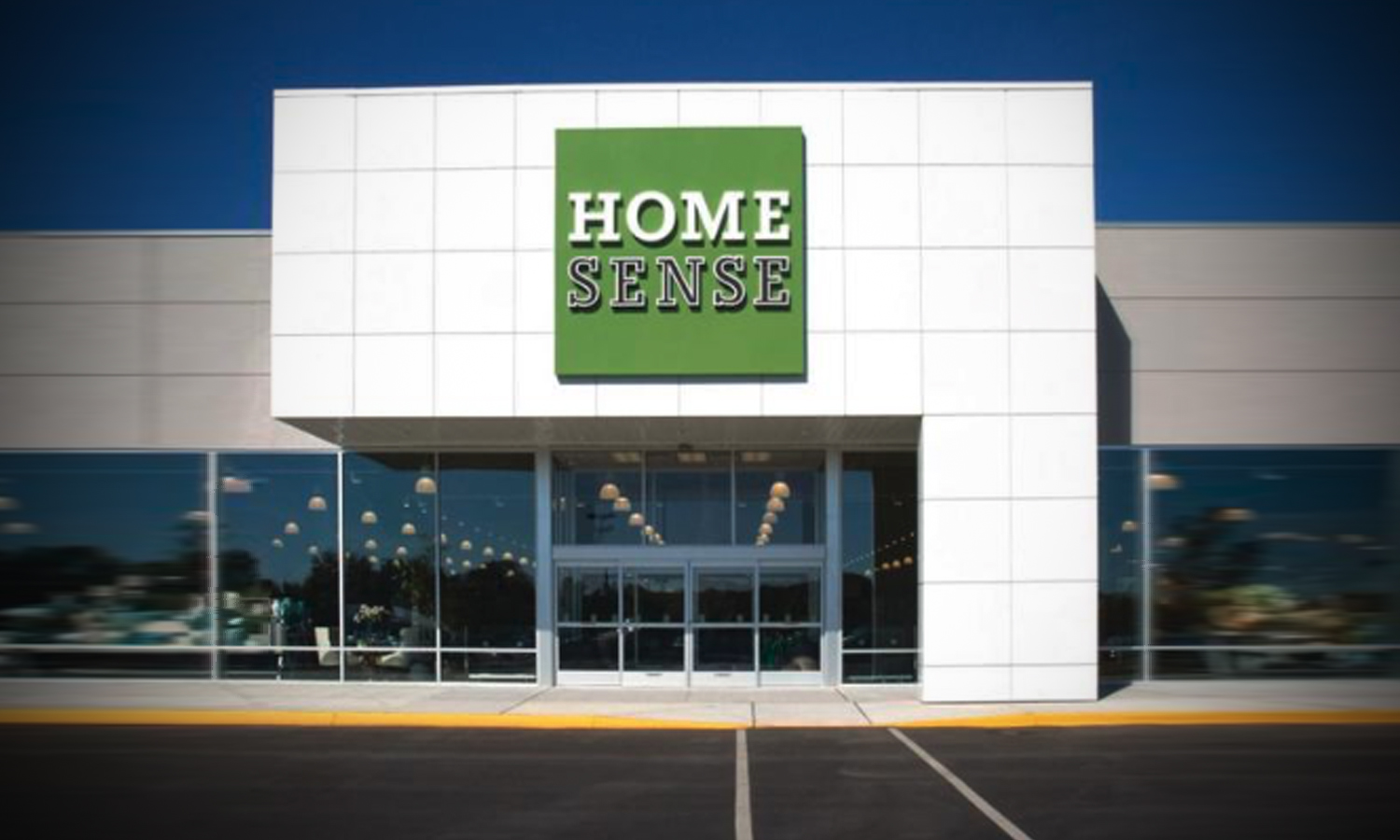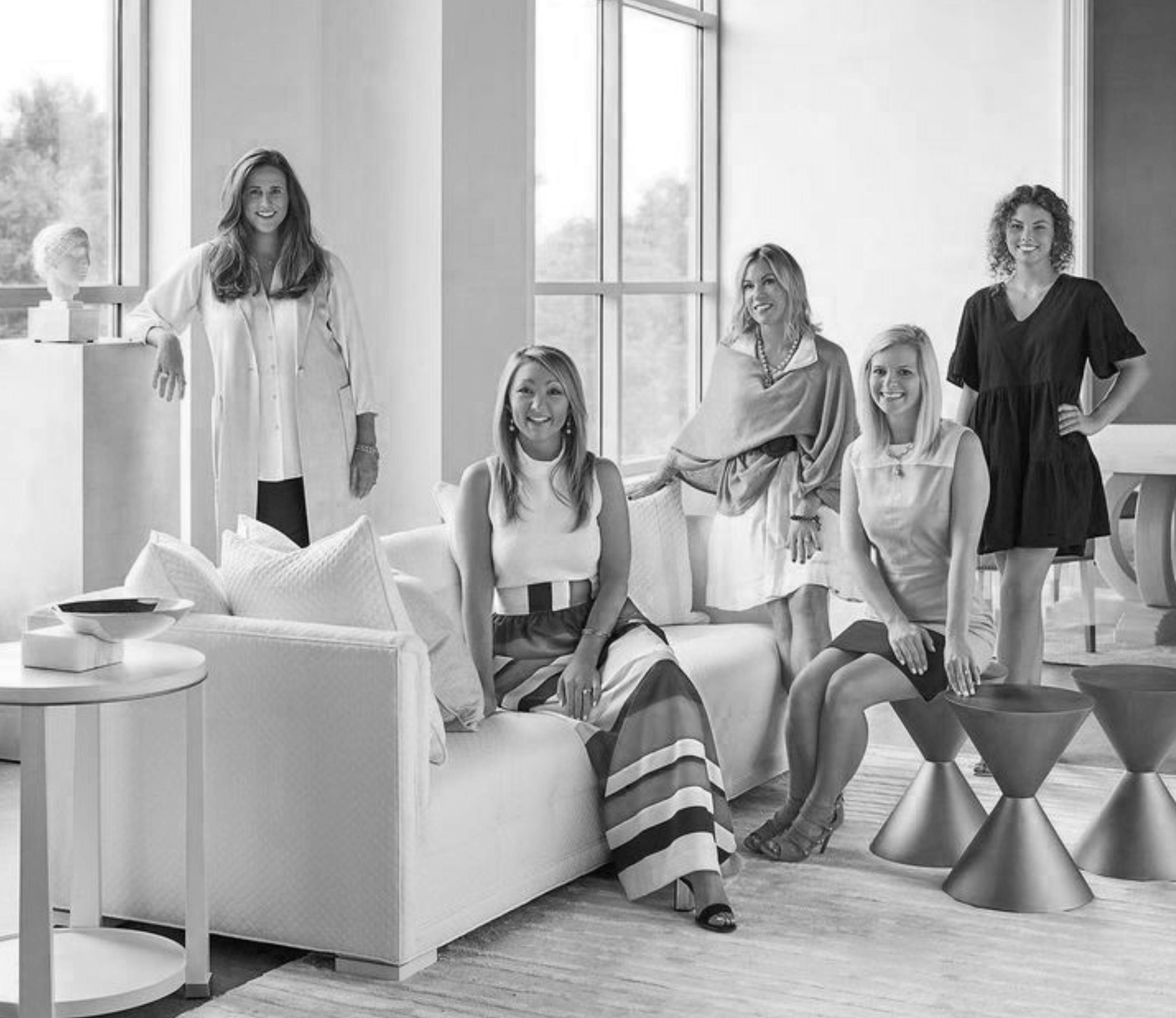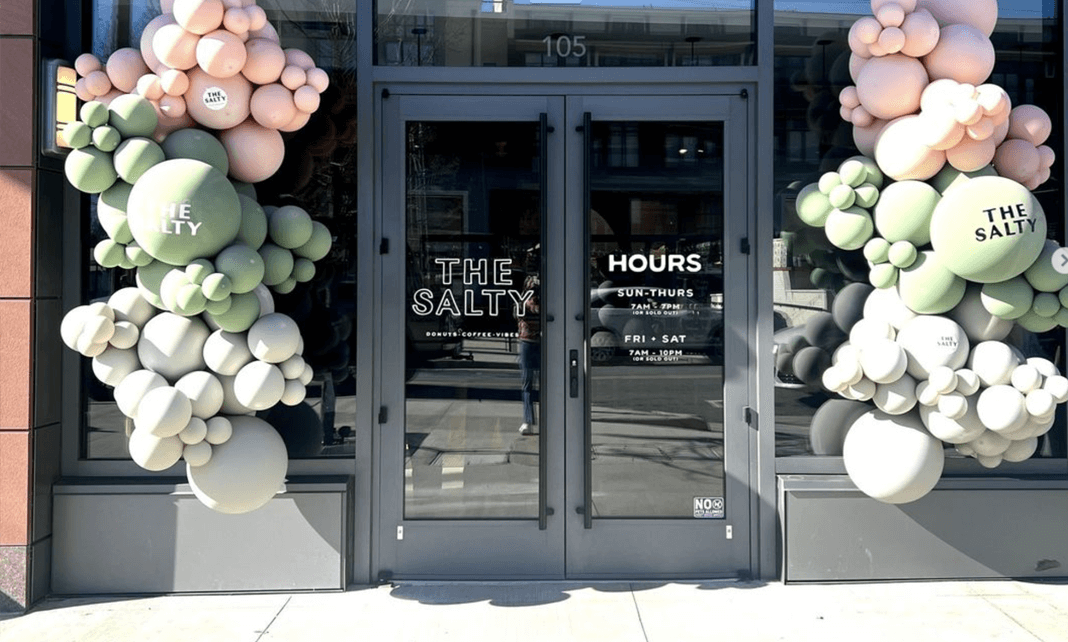We’re excited to announce that two of our newest tenants, Aldi Grocery and Fidelity Investments, have joined Sea Turtle Marketplace in Hilton Head Island. This newly developed, ~100k sf community center is located right at the center if Hilton Head Island’s retail corridor and has great visibility from the highway. Darrell Palasciano represented the Providence Group in this transaction.
Author: Bryson
The Providence Group Expands Retail Footprint in Raleigh, NC
Raleigh, NC, January 23, 2024 – The Providence Group, a Charlotte-based boutique retail real estate brokerage firm, is adding a new office in Raleigh, North Carolina and welcomes two seasoned Raleigh based brokers, Reagan Crabtree and Cristi Webb. The Providence Group will continue to service existing clients and expand services in the greater Triangle market with additional retail brokerage capacity and a new Raleigh-based property management group.
“We have wanted to open a Raleigh office for years. We waited for the right caliber of professionals to replicate the quality of the Charlotte office and are excited to provide the same high level of service our clients expect, which will be enhanced with the addition of Reagan and Cristi,” said Darren Wood, Partner, The Providence Group.
“We have actively managed assets for clients since 2013 in the Triangle Area, allowing us to establish strong relationships with select vendors and real estate professionals. We are truly excited about opening a local office and believe this will allow us an opportunity to provide our boutique style property management practices to local and institutional clients on a broader scale,” said James McGee, Director of Property Management, The Providence Group.
“After 18 years focused on retail brokerage in the Triangle, I am very excited to join The Providence Group team and lead the expansion of the new office in Raleigh. Raleigh has experienced exponential growth over the last several years and I look forward to continuing to shape the future of the retail market in collaboration with The Providence Group and their national X Team platform,” said Reagan Crabtree, Partner, The Providence Group.
The Providence Group is handling leasing and management assignments for Landlord clients including InvenTrust, Northwood Retail, Slate, Crosland Southeast and Kite Realty. Tenants the firm has represented include TJX Co’s, Ulta, Shake Shack, Discount Tire Co, Five Below and Aldi, to name a few.
Both Crabtree and Webb join from CBRE Raleigh and bring The Providence Group’s total number of professionals in North Carolina to 41. The Providence Group is a leading provider of retail real estate services in the Carolinas since 2000. The Providence Group is a proud member of the X Team Retail Advisors, a national organization comprised of more than 350 retail real estate affiliate specialists located in 44 markets across the U.S. and Canada.
About The Providence Group
The Providence Group is a highly focused and client-driven boutique retail brokerage firm based in Charlotte, NC. The firm was founded in 2000 and has completed thousands of transactions around the Southeast. The team of retail experts remain committed to creating a competitive edge for customers through in-depth knowledge and decades of experience in key local markets. The Providence Group brings deep relationships with area developers and delivers decades of expertise guiding retailers’ expansion strategies including national brands, regional chains, and local merchants. The firm specializes in site selection, sales and leasing, disposition services, property management and development services throughout the Carolinas.
Homesense Hilton Head
Homesense Takes Anchor Space at Sea Turtle Marketplace in Hilton Head, SC, Market Debut and First Store Planned in South Carolina for New TJX Brand
Charlotte’s Providence Group Brokers Nearly 30K SF Deal for Retailer and Landlord, Greenberg Gibbons, which Acquired Community Retail Center in 2022
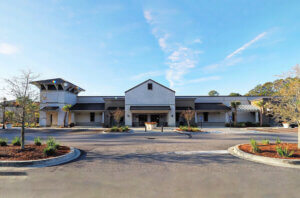
Charlotte, NC, November 14, 2023 – The Providence Group, a Charlotte-based retail real estate brokerage firm, executed a roughly 29,000-square-foot anchor lease with Homesense at Sea Turtle Marketplace in Hilton Head, SC. The newly redeveloped 100,000-squre-foot community center is located in the heart of Hilton Head Island’s retail corridor.
The Providence Group’s Melissa McDonald represented the tenant, while The Providence Group’s Darrell Palasciano and Matt Henry represented the landlord, Maryland-based Greenberg Gibbons.
The Providence Group’s Palasciano said, “The redevelopment of Sea Turtle Marketplace will continue to attract best in class retailers, restaurants and services to the Hilton Head and Bluffton region. With a robust seasonal market and expanding year-round population, Hilton Head visitors and residents seek new and dynamic retail experiences at which to shop, dine and visit. Our newest retailers, Golf Galaxy and Homesense, fill two retail categories that are perfectly programmed to serve the needs of the market.”
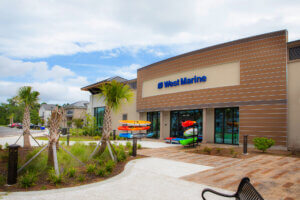
The Homesense brand is new to the market and the Sea Turtle Marketplace location will be the first in South Carolina when it makes its debut in Spring 2024. Greenberg Gibbons purchased the property in 2022 and this is the second major anchor announcement since its acquisition after Golf Galaxy joined earlier in 2023. The Providence Group expects the third and final anchor announcement in the coming months.
The site at 430 William Hilton Pkwy. offers high visibility and access along a key retail corridor where nearly 35,000 vehicles pass each day. The island attracts more than 2.5 million visitors annually.
Homesense is the latest retail experience from the TJX family of brands. The new home store offers an expansive selection of furniture, rugs, lighting, wall art, and décor from around the world. Homesense joins other retailers at the center including Starbucks, West Marine, Petsmart, Golf Galaxy, Gusto Ristorante, Tai Chi Massage Spa, Island Nail Spa, Blaze Beauty Studio, Jersey Mike’s, Orange Theory Fitness, and Parker’s Kitchen.
Insatiable Demand Drives Southeast Retail
Retail activity has continued to accelerate through the end of the pandemic and shopping center owners and investors are now experiencing new levels of growth. Retail leasing activity remains elevated as retail brands continue to fill space across the Southeast markets. Retailers are exhibiting an increasing willingness to explore beyond traditional core markets into secondary and even tertiary markets not considered previously. That bodes well for landlords because it continues to drive demand across the region, and in many cases multiple retailers are lined up and eager to take space when it comes to market.
Those drivers are positively impacting the market both from a tenant leasing activity perspective as well as increased demand. That is clearly evident for retail landlords, especially those with suburban sites. The shift to suburban sites, as well as to secondary or tertiary markets, especially for mixed-use projects, is helping retail centers to outperform urban assets from occupancy and rental rate perspectives. There are several similar underlying factors that explain why suburban space continues to thrive, despite the market challenges.
Suburban settings allow retailers to meet demand from those who now favor working in suburban offices or in their homes, under the new remote work practices and patterns that evolved out of the pandemic. Not only do they avoid long commutes into an urban area, but a better work-life balance can be achieved. Retail assets that embrace and create more opportunities for community involvement, whether through tenant mix or activities, serve as hubs for the community and are emerging as go-to destinations for the whole community.
Coming out of the pandemic, suburban retail has continued to experience demand from both retail and restaurant users. That has held true for categories that tend be popular in terms of price points that are affordable across a wide swath of consumers such as everyday food and food experiences. There’s almost an insatiable appetite by retailers for those locations.
That trend is obvious in the fast-food user category with the continued growth of McDonald’s, KFC and other national brands that are filling in market gaps or expanding their footprints to five, six or even seven stores in a market. There’s also an exciting runway for chicken concepts like Raising Cane’s or Guthrie’s, as well as for emerging concepts to mature and accelerate.
In the suburban restaurant space, mid-priced brands saw modest growth after the Great Financial Crisis, but growth accelerated the last few years coming out of the pandemic. Consumers have been spending money again, especially at restaurants that delivered a quality experience without breaking the bank. That encompassed restaurants like Darden Restaurants’ Olive Garden, Texas Roadhouse, and others in the mid-priced swath of brands. The same growth trend has been experienced in the quick serve space, especially when locations added a drive through. That trend is particularly prevalent in the beverage space for brands such as Dutch Bros, 7Brew, Tim Hortons, Scooter’s Coffee, Black Rifle Coffee Company, The Human Bean, Caribou Coffee or BIGGBY Coffee Drive Thru.
Turning to the soft goods side of retail, an interesting trend we’ve monitored closely is the shopping cart full of clothing retailers seeking to replicate the success of T.J. Maxx or Marshalls. Burlington even went as far as to change its model to a smaller footprint with more product in stores, and Beall’s Outlet tweaked its merchandising model in Texas. Those efforts to streamline supports a retailers’ efforts to achieve higher per square foot sale and mirror the success achieved by T.J. Maxx or Marshalls.
In the fashion retail category, brands in the junior anchor type of space, are pushing to deliver good value and a quality experience that consumers with reasonable incomes can afford. They tend to be a bit more Internet proof because they seek to appeal to shoppers hunting for a bargain or a designer shirt.
The sporting goods category is active among brands such as Academy or Dicks, which were considered category killers back in 1990’s. Now we are seeing more junior anchor centers emerge in retail centers without a major anchor. Today, there could be four or five junior anchors lined up for space such as Hobby Lobby, Marshalls, Petco, or Target. Demand is insatiable for that type of space in the Carolina’s and Southeast markets.
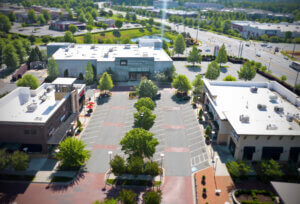
Demand Drives Positive Impact
The Southeast has experienced robust population growth, as evidenced by a report in the Charlotte Business Journal that notes 113 people are moving to Charlotte every day. Combined with a lack of retail development, retail occupancies have been pushed into the 96% range, meanwhile development is focused on multifamily and other property types besides retail.
Since mid-2021, retailers are reporting sales increases of 8 to 10% from last year, predominantly on the service side and small goods category. A challenge for landlords is to work with tenants to get tenant improvement budgets in line with deliverables. Property managers are also working with landlords to upgrade and update their centers, encompassing such areas as HVAC systems, outdoor seating, designated take-out parking, landscape and storefront enhancements.
Landlords that own existing retail assets currently are facing bright prospects, as a result of that insatiable demand. It is expected to translate into an extended period in which they will be in a favorable position, especially for strong junior anchors or quality restaurants. Those centers are expected to be well leased.
The high-profile bankruptcy of Bed Bath & Beyond may have sent warning alarms off for some, but it has actually been a positive for some landlords. First, those in the retail industry weren’t surprised because the demise transpired for a period of three to five years. Secondly, in the Sunbelt the majority of those former Bed Bath & Beyond boxes had a line of expansion-minded retailers waiting for the closures. Due to pent up demand, landlords were in a unique position when a store closed because they could call five or six national retailers back to offer them space in a market or center that previously was unable to accommodate their space requirement.
One of the biggest challenges for both landlords and retailers is the cost of building new space and building out existing space for new tenants. It is a situation that is increasingly becoming more and more difficult for them to navigate. In a succession of years since the recession through 2015 when growth spurred increasing costs, through the pandemic when costs blew up, construction costs have escalated for new and renovated spaces in 2020 to 2021. Then in 2022 interest rates began rising and those increases have driven up construction costs significantly, in some cases a doubling. In 2023, banks have been willing to lend, but at higher rates and under different LTV scenarios. Borrowers need to provide 50% down now rather than the 30% they had been required before, which of course requires them to raise more cash if they want to move forward on a project.
An additional challenge for developers has been cap rates shifts, which has resulted in new investment return expectations. While it now costs more to build, developers and investors are faced with reduced returns and values at exit. In recent years, the industry has struggled through a period of death by 1,000 cuts, where as soon as they survived and got comfortable with one challenge, another came along.
The lack of new development has resulted in second generation retail space being heavily in demand. The current market is also allowing landlords to replace lower paying tenants with comparable rates and some concessions. But it is challenging to work around investment required up front to achieve increased NOI and preserving asset value.
Landlords must get comfortable with what to invest and their ROI expectations. Those owners who take a proactive approach can transform a center built in the 1980s. Outdated features like a porte cochere can be removed to update the appearance and functionality of a center. That requires landlords and their property management team to consider what city codes will allow, conduct advance planning and evaluate what impact the improvements will have to produce the highest returns.
Today’s retail teams are becoming a blend of asset management, property management and leasing. Landlords now require teams to do more than just lease up a center, collect rents and maintain the facility. It has evolved into more of a strategic advisory role too. Leasing and property management teams must understand what the owners’ goals are for a center, often providing sophisticated insights on the finance side, rents and projected returns to investors, which asset managers had typically provided. Some investment firms or owners have reduced the size of their internal teams and external advisors, or smaller owners may not have had an asset manager. Managers are helping fill those voids, even taking on such tasks as marketing the center or promoting it through social media efforts. Ultimately, the objective is to help position the asset for the highest value and return in the market. Having a third-party retail property management team in place that is familiar with a local market ensures a center remains relevant and allows it to better compete with surrounding properties.
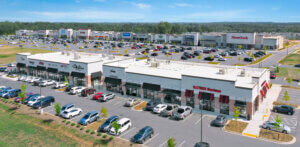
Short-Term Expectations
Developers and landlords must be aggressive and creative when finding ways to meet retailers demand today. It is expected that they will figure it out, but it will not be an easy road ahead. A silver lining is that there’s plenty of demand, so they are not in a position to complain much. Those that survived the Great Financial Crisis when there was no demand, realize they have a good problem to solve now. The good news is landlords with properties that historically have not performed well are attracting tenants and reducing vacancies, due to lack of opportunities for retailers elsewhere. High demand and low space supply conditions are allowing even the most challenged shopping centers to lease up and experience healthier projections.
Small markets that had otherwise not generated previous interest from quality retailers, now are receiving plenty of attention. While they may have had low barriers to entry, they were just too small to justify a new store. That’s changing and retail brands across the spectrum are exploring options. That ranges from all the T.J brands, Marshalls, Home Goods and Home Sense to Ross Dress For Less, Burlington, Beall’s Outlet, Hobby Lobby, Ulta, pOpshelf, Michaels, Rack Room. The same holds true for food and beverage retailers including all the chicken or coffee retailers, Darden brands, Outback and fast casual brands like Chipotle, Dave’s Hot Chicken and Hava?.
All that interest and activity is expected to fuel the retail sector into 2024. Investors and owners in markets across the Southeast are expected to see elevated levels of demand, while supply remains constrained. Even if the period of insatiable demand wanes, the retail sector is positioned to return to a more normal pattern of growth and activity.
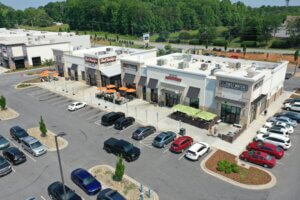
Authors: Darrell Palasciano is a retail broker with Charlotte-based The Providence Group. James McGee serves as Director of Property Management for The Providence Group. For more information, visit https://www.providencegroup.com.
Management Blog Series #1
Blog 1: Property Management Insights from an Expert
At the Providence Group, we embrace a traditional approach to property management, with a strong focus on mechanical aspects and building envelope systems. Our strategy revolves around comprehending the property’s key components and implementing preventive maintenance measures to reduce capital costs. For each commercial real estate property, we meticulously consider details such as the selection of the most suitable roofing system, whether it’s a 45mil, 60mil, or even a 90mil option. We also deliberate over choices like whether to use flat or semi-gloss paint and determine the most appropriate LED lighting for a specific property. Adding value to properties is of utmost importance to our team, benefiting both tenants and owners alike.
Our objective is to assess the value and benefits associated with each choice and make informed decisions accordingly, all while sharing our knowledge with others.
In our first blog post, we will delve into the roofing selection process and explain why it’s crucial for property owners to understand it. James McGee emphasized that the first step in this process is understanding your client’s goals. Is it a short-term hold, a long-term investment, or something intended to be passed down through generations? It’s essential to have these answers before making a decision. Additionally, understanding their investment strategy or goals for the property’s future allows us to consult with our research and other experts to evaluate existing conditions and determine the most suitable roofing system.
For instance, the choice between a mechanically fastened system and a ballast system depends on factors like local building codes and the type of purchaser. Generally, codes permit two layers of roofing before requiring a tear-down to the roof structure.
In the case of certain properties, such as grocery stores, it’s usually not advisable to use a mechanically fastened system due to the risk of light debris falling on produce. For a 200,000 square foot industrial property with HVAC systems on the roof and minimal foot traffic, fan fold insulation might be considered. It’s worth noting that traffic on fan fold insulation will impact the roof surface more than ISO board insulation but result in less initial expense.
In our second blog, we will discuss which factors contribute to one paint option being superior to another, and how the selection of paint impacts the value of a property.
New Coffee Culture Brewing
Starbucks introduced the United States to gourmet coffee and an experience built around a hot cup of coffee that customers quickly picked up in the morning on their way to work. Over the last five decades, America’s coffee culture has matured, and a new version of a coffee destination is emerging that broadens the time of day when the product is purchased, as well as the product that’s being sold. This time shift and expanding menu can appeal to both those who need a jolt of caffeine to get going in the morning, as well as younger adults seeking a fun fruity beverage or high energy cold drink in the afternoon.
Set against that legacy of Starbucks, this new coffee generation is emerging, and it isn’t entirely about coffee and increasingly embraces a model built around a drive-through experience. This significant shift underway in the coffee retail sector is being played out on a national stage and the motivations behind this transformation are multi-faceted. The success is evident in the strategies of a few rapidly expanding concepts.
A new group of coffee brands are emerging that are more than coffee. This includes concepts as Dutch Bros, 7Brew, Tim Hortons, Scooter’s Coffee, Black Rifle Coffee Company, The Human Bean, Caribou Coffee and BIGGBY Coffee Drive Thru. While Starbucks remains the dominant coffee brand, with Dunkin’ and Peet’s also holding strong positions. According to Chain XY data, Starbucks added 561 stores to its national store count from spring 2022 to spring 2023, and Dunkin’ expanded by 180 stores, while Peet’s national presence shrunk by seven stores in the past 12 months. During the same period, Dutch Bros increased its footprint by 168 stores, Scooter’s grew its store count by 157 and BIGGBY added 61 stores. Growth in the new coffee category is not advancing on the same pace as traditional coffee retailers, but the segment is expanding as strong regional coffee retailers explore national roll-outs. Retail experts see a significant runway ahead for a full slate of new coffee retailers to rapidly initiate national expansion plans with new menus, supported by the convenience of drive-throughs and technology that appeals to its customers.
Demographic Shift
Today’s coffee store has embraced a different demographic than the coffee aficionado. Coffee retailers are selling a variety of cold, energy or fruity drinks that appeal to a younger demographic. The brands and product line-up are wrapped up in a host of other aspects including the influence and popularity of social media. It is safe to say, a typical Starbucks customer seeking a refined, indoor experience is likely less attracted to this new generation of coffee retailers. A decisive marketing push by Dunkin’ and new coffee retailers to target younger customers has decreased the average age of their customers down 7.2%, according to research by Placer.ai.
“The market’s fragmented and the new coffee retailer is less concerned about selling coffee in the morning,” said Providence Group’s Darren Wood. “The fact that they prefer to be as close to Chick-fil-A as they can reveals a great deal about when they believe their peak hours are now.” The new coffee retailer’s prime time leans closer to afternoons when kids get out of school or the early evening. Additionally, the menus skew towards cold, fruity drinks, bubble tea concepts or milkshake brands.
In fact, Placer.ai recently looked at the shift in coffee visits between 2019 and 2023 and uncovered part of the reason coffee outperformed the wider dining segment. A portion of coffee traffic is driven by a need to grab a cup of coffee to get started in the morning or as an afternoon boost, but researchers say location intelligence indicates midday visits at a number of national coffee retailers is increasing. Between Q1 2019 and Q1 2023, almost all coffee chains analyzed, including Starbucks, Dunkin’, Tim Hortons, Peet’s Coffee, and Caribou Coffee (and excluding Dutch Bros) experienced an increase in visits between 11 am and 2 pm, reports Placer.ai. That growth is likely anchored in the fact that people want a midday pick-me-up or remote workers are finding a spot to get into a more creative mode. Wood notes, there is also a new trend emerging in coffee retail circles called “lunchflation,” which simply refers to the fact that people now view coffee as a treat, while cutting back on eating lunch out.
“I’d Like a Smooth 7 & a Seven Fizz, Please”
“The product menus of these concepts are absolutely changing the script,” says Providence Group’s Darrell Palasciano, who primarily represents landlords, developers, and retail properties. “In the beverage space, the non-alcoholic beverage space has gone from being an add-on at a coffee shop or a restaurant to these stand-alone hot cold beverage brands. These new coffee retailers have totally retooled that Starbucks experience for a whole new generation of teenagers and 20 somethings. They’ve just turned the whole thing upside down,” he said.
The success of the new coffee retailer is being driven by a shift away from the traditional morning coffee customer and reflects a move to expand its market into new products. The menus of these new coffee retailers like Dutch Bros or 7Brew are different and they are targeting a different audience at a different time of day. “I am confident kids on the way to high school in the morning are not likely to stop at a traditional coffee shop, unless they’re swimmers headed to practice at the crack of dawn,” said Wood, who notes these expanding coffee retailers prefer to be near high schools and the suburbs where the kids are.
Where’s the Drive-Through?
A critical component of the new coffee retailer are multi-stacked drive-through lanes. A double-lane drive-through allows them handle significantly more customer volume. “They crank out the drinks a lot faster at Dutch Bros and 7Brew locations compared to traditional coffee stores,” said Wood. That is one reason traditional retailers are working to figure out ways to incorporate more drive-through strategies at store locations that typically weren’t designed to accommodate them.
“Just about every site planning exercise I’m conducting today for existing coffee stores involves adding a drive-through,” said Palasciano. “They understand and see how obvious it would be to move the greatest number of cars through, but there is reluctance among some brands that were built around a coffee experience inside the store.”
There has been a multi-decade push and pull between convenience, QSR merchants and cities about drive-throughs. Simply put, coffee users want more drive-throughs, and many municipalities prefer not to have them. That is mainly because vehicular traffic isn’t aligned with the notion of good, sustainable urban planning, so they’ve enacted zoning over time to encourage people to take public transit or drive to a walkable shopping center to spend more time shopping and hanging out. “That’s the push and pull between the operators, the QSR, those municipalities and zoning,” says Palasciano. Developers seek to provide a real estate solution for an emerging category of QSR merchant’s that don’t offer a traditional sit-down experience with lower parking requirements but want as many drive-through lanes as can fit on a site.
“The biggest challenge with any drive-through, first and foremost, is municipalities that tend to discourage them because it cuts against what most city planners would probably argue is good, sustainable city planning,” says Palasciano. “It is hard to argue the advantages of transit oriented and pedestrian friendly urban planning. However, customers demand convenience at coffee retailers and that is being met with drive-throughs.”
Starbucks added drive throughs because their customers wanted it. Demand has grown to the point where now more than half of their customers insist upon it, notes Palasciano.
The Embrace of Convenience
The model in suburban retail is based on convenience rather than experiential retail. While there remains a compelling argument to create walkable urban environments with outdoor cafes and gathering spots where people can linger, customers still require convenience options. The growth of this drive-through centric model has been further fueled by people working from home and avoiding in-person dining during the pandemic. COVID changed work locations and pushed business to the suburbs
“The majority of this massive growth in coffee retail is occurring in the suburban environment and from a convenience perspective where folks can drive in and drive out and get to work on time with their hot coffee,” says Palasciano.
This new category of coffee-driven QSR is experiencing record sales and higher volumes when drive-throughs are added into the mix and that is driving higher rents and overall performance of a center. That rise in popularity and success hasn’t escaped the notice of developers, who are interested in filling that need and meeting demand for coffee, especially in new suburban development projects.
“Typically, with new projects these days, at least new suburban development projects in most cases, we are initially going in on these projects with the understanding that there’s a very good chance we end up with a coffee user that will require a drive-through,” says Palasciano. “So, we’re putting them on many of our plans even before we pick up the phone and start calling the coffee users.”
Palasciano notes developers are very receptive to incorporating coffee operators in their projects because they better understand their programs and needs now, in particular the desire for multiple stacking drive-through lanes. Providing what they need allows the coffee operator to generate high volume and in turn pay higher rents – thus developers are happy to oblige.
Growth Through a Pandemic
Coffee retail is also being advanced by the fact that QSRs and food operators needed to find ways to survive pandemic lockdowns when indoor dining areas were closed. Wood said, “Many of these concepts have evolved because inside seating was closed. In the suburbs or outlying areas restaurants and some coffee retailers with drive-through or outdoor pick-up areas did better because people weren’t going to the office in the CBD or office parks, a condition that has been extended via hybrid work models.”
Coffee has proven resilient through the pandemic, too. Research by Placer.ai on the baseline change in coffee and overall dining visits since January 2020 reveals that coffee’s COVID recovery regularly outperformed that of the overall dining industry. Further, since January 2022, monthly year-over-three-year (Yo3Y) visit gaps in the coffee space were consistently narrower than Yo3Y visit gaps for the wider dining category.
Throughout the pandemic, touchless technology was favored and found a place in the retail environment. While that was mainly to reduce the spread of COVID, people adopted technologies that allowed them to quickly and easily get the things they wanted without having to speak with anyone. That may have been a touch screen or app on their phone that produced an order that was ready when they arrived or shortly thereafter. Not only did that meet the customer’s need it generated some benefits for operators who could quickly process orders via technology such as mobile ordering and were able to move the staff typically taking orders into back-of-house order fulfillment roles.
Palasciano credits ordering apps, first and foremost, for helping remove friction from the transaction process. “Once the transaction becomes automatic, it removes a choke point and that quickly boosts the top line for a coffee retailer,” he said. Since those functions are handled off-site it helps reduce the amount of space needed for both the staff taking orders as well customers waiting in line. It becomes almost a Henry Ford style of innovation. And in some cases, orders can be placed online, and customers visit a pick-up only location without any Barista’s visible.
An additional benefit of apps is the technology can be used to track customer purchases for future ordering, sending advertising offers or sharing brand and marketing information with customers. This is a “paradigm shift.” Technology and online platforms have replaced the need for traditional paid advertising, too, since social media has become a digital “billboard” to connect with a younger generation and new demographic for coffee retailers.
Food and beverage categories have been moving in the drive-through direction since the 1950s or sixties, notes Palasciano. ‘Probably like many other categories, the market experienced and has been driven by the technological trends in food service. Technology just exacerbated and accelerated the food and beverage sector when COVID hit. It is clear coffee was one of the biggest participants in that exponential growth,” he said.
The pandemic also likely pushed cities to change or suspend zoning to allow restaurants to add more drive-throughs, in some cases full-service restaurants with liquor licenses were even allowed to sell off-premises alcohol during COVID.
Drive-Through & Coffee Culture
The growing trend of drive-through coffee retailers over the past few years is a continuation of a movement underway for decades. The pandemic accelerated expansion plans and parts of the country that hadn’t yet adopted this new convenience coffee culture found in other areas such as in Seattle, the West Coast or Northeast, now have embraced it. A couple of years ago about the only national coffee-focused retailers with a presence in the Southeast and Carolinas were Dunkin and Starbucks. Now, there are six players actively seeking sites as part of national roll out strategies.
All of this growing and new competition could work to dilute a brand since the theory was the coffee cup was limited in size. But another view is the new coffee retailer is actually opening up a new beverage category that is coffee-adjacent. “That later thesis is easy to spot on the menus of Dutch Bros and 7Brews. The most popular items they sell are those that don’t have as much to do with coffee,” says Wood, who notes as these concepts open up in new markets like the South or Indiana, they are seeing higher volumes as new customers discover the new coffee shop. In cases where these new coffee concepts are expanding into a market that may be considered an older, stagnant coffee market, they are discovering the new concept is being embraced as a “big deal.”
There is excitement around these new coffee brands, and they are capturing new market share. That hasn’t gone unnoticed by traditional coffee retailers like Starbucks either. Wood said, “Starbucks is putting stores in place that if you’d asked me four or five years ago, I would have not believed it, because I thought that would completely dilute their brand.”
Wood notes shifting the menu and experience to cater to a younger demographic segment can be credited for part of the success of these new coffee retailers, too. In the case of Dutch Bros and 7Brew, the experience is completely different than that at a Starbucks. Some of this is because coffees are made by baristas inside at a Starbucks while the new model involves a different outdoor experience. In traditional coffee stores, the experience was built around gourmet coffee and an environment in which customers could linger, buy music or coffee mugs, and might even serve as a second office, meeting place or touch-down spot between meetings. While those experiences still exist in urban markets, the new coffee experience has moved outdoors in the suburbs.
Order takers at the new coffee retailers are stationed outside under canopies and they interact with customers in their cars, typically across multi-stacked lanes. Those taking orders at Dutch Bros and 7Brew, that may amount to a $6 drink, are trained to be upbeat, enthusiastic, and bubbly. It all adds up to impressive average unit volumes that could exceed $2 million. When you factor in significantly smaller footprints by square footage, it is easy to see why the rapid expansion by these coffee retailers makes sense.
The Future Includes Coffee
Developers considering new projects are wise to start with a plan that includes a coffee retailer as part of its QSR lineup. That is especially true for suburban retail development site plans. “The starting point for projects traditionally included a burger place, a taco QSR and a fried chicken outlet as the “must have” tenants. Today, the tenant mix must also include a coffee retailer as a freestanding drive-through as one of the leading QSR categories,” said Palasciano.
Expansion plans for QSR’s can now include smaller markets that they previously steered away from, and those plans must now also include coffee retailers. Palasciano said, “Any market that can support a McDonald’s, can also support a Taco Bell, can also support a KFC. And now for the first time, may also support a Starbucks. And that is a very new thing. You didn’t see that five years ago. You do see it now.”
Smaller markets are proving to be able to support these new coffee retailers, too. The amount of money being spent on coffee in markets previously thought too small to justify expanding into is staggering. The size of the coffee cup is proving to be bigger than imagined, especially by the measures of population and income by which they traditionally were evaluated.
Starbucks was the first major coffee shop to prove decades ago that customers would pay $4 for a cup of coffee at a time when the going price for a cup of coffee was half that amount. Starbucks was able to increase the price of that coffee and small markets are making that connection today. Customers who typically pay $5 for a burger and fries’ meal at McDonald’s are willing to pay $4 or $5 for a coffee drink, as well. It is interesting to find those same customers who eat out at a QSR, can and are willing to spend the same amount on coffee. That revelation follows the arrival of a Starbucks, likely the first upscale brand some small markets have seen. Palasciano calls that embrace of upscale coffee retailers in smaller markets “fascinating and mind-blowing.”
Because the margins can be thin in the traditional sit-down coffee shop it is increasingly difficult to survive. That’s one reason drive-throughs make sense even more today, especially for retailers that don’t own their real estate, notes Wood. “Adding a drive-through helps add revenue and allow them to meet rent obligations.” Legacy brands will likely struggle unless they are able to incorporate new revenue streams across more parts of the day and drive more volume that drive-throughs can provide,” he said.
Coffee retail is here to stay and is now considered a staple of a QSR lineup. The volume and revenue that coffee can produce supports its inclusion in the mix, while drive-throughs are facilitating the continued growth of a new model in coffee retailing.
The classic Italian coffee culture envisioned and embraced by Howard Schultz at Starbucks has given way to a new coffee world in which a gourmet coffee experience is no longer the centerpiece. What has replaced that is the convenience a drive-through experience can facilitate, whether customers order a coffee drink, a cold fruity beverage or energy infused drink. And it all is contained in a cup bursting with a fresh new attitude and vibe that is contagious.
Homesense comes to Cornelius, NC
A new Homesense store has opened in The Shops at the Fresh Market at 20615 Torrence Chapel Road in Cornelius, NC. The center is located at the intersection of I-85 and the busy traffic corridor of Catawba Ave. This will be he first Homesense store to come to the Carolinas. Melissa McDonald represented the client, Homesense, in this deal.
Clean Your Dirty Face®
30-Minute Facials and Amazing Products- Clean Your Dirty Face®’s Charlotte Metropolitan CLT location is officially OPEN! The company has many locations throughout the United States and this is their second location in the Charlotte metro area. Clean Your Dirty Face® is known for their $25 special for first time customers. They use their own esthetician-formulated clean skincare in your facial, and you can expect clean, more radiant skin in 30 minutes. Melissa McDonald and Lauren Faulkenberry represented the Landlord in this deal.
Hart white
Full-service interior design firm, Hart White, has found a new home at the charming 1113 Greenwood Cliff property in the Midtown market of Charlotte. Specializing in luxury residential design, the firm offers design assistance in complete custom build/renovations, home design, room design, as well as furnishings and styling.
Eric Howell, of The Providence Group, represented the Tenant and Taylor Barnes, of The Nichols Company, represented the Landlord.
The Salty
The Salty has arrived and the hype is REAL. Today marked opening day for the Miami-based donut shop located on the ground floor of the Dimensional Funds building in South End at the corner of Camden & Park Ave.
Melissa McDonald and Andrew Tanneberger represented The Salty in this transaction and continue to seek out opportunities throughout the Charlotte MSA.




